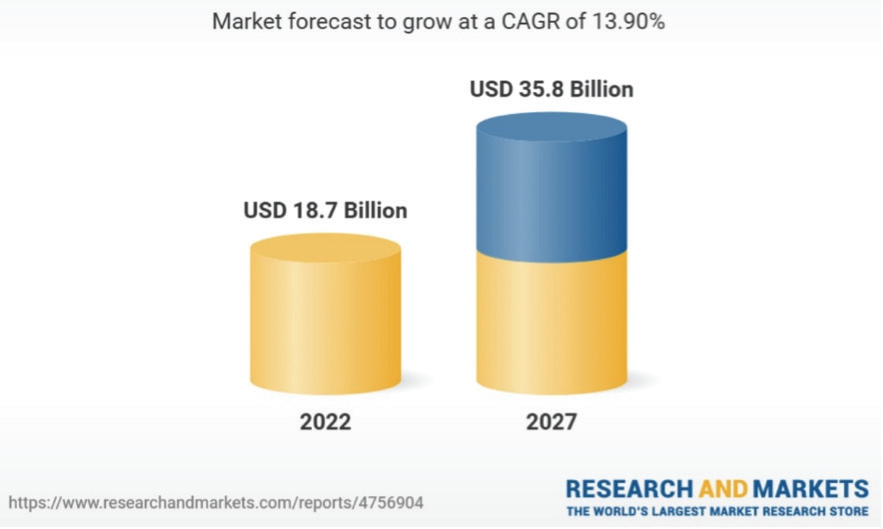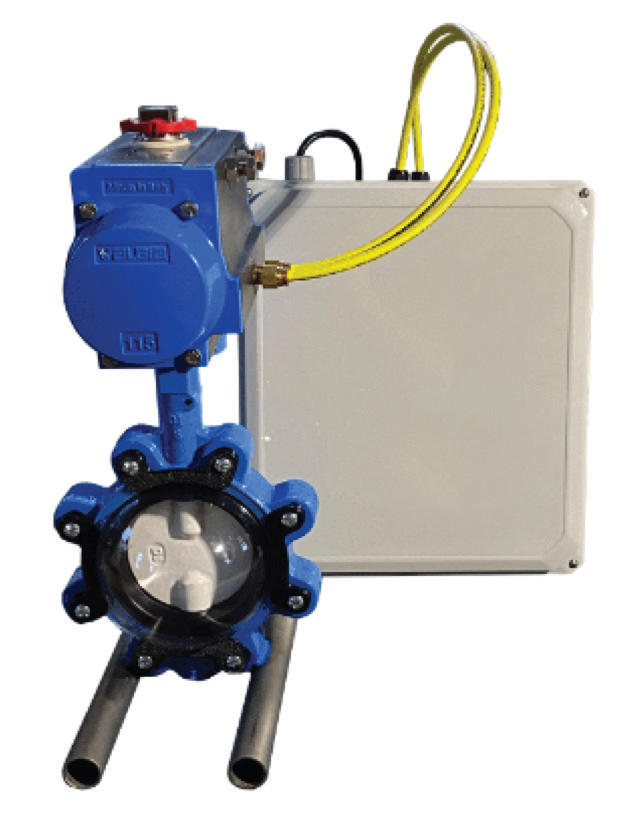The valve automation industry continues to expand throughout all manufacturing and processing sectors. There is a growing demand for innovative technologies to increase safety, production efficiencies, and reduce loss of material; be it a gas, liquid, pellet, or slurry. Successful companies, regardless of size, that focus on safely driven or failsafe technologies, continue to benefit in many ways. This includes increased employee safety, reduced loss of expensive or hazardous materials, better relationships with surrounding communities, and healthier dialogue with environmental activist groups.
By Bob Connal, Founder and IP Developer – Hybrid Automation Inc. & Tim Chicoine, Director of Sales – WedgeRock Engineered Solutions
The growing demand for true, spring return failsafe electric actuation will be-come a high-growth business sector. Figure 1 provides an overview of the entire valve automation sector, worldwide. It is difficult to estimate the percent growth of failsafe actuation, but it will happen. As one can see from recent research and market reports, the actuation industry is forecasted to grow by a compounded annual growth of 13.9% through 2027. 1
Since the advent of electric and pneumatic valve automation, there has been a ‘firewall’ between the two operating systems. This holds true for fail-in-place and failsafe applications.
Actuator Types
Contingent upon the availability of compressed air, pneumatic actuators have been the default product of choice for valve automation, especially in fail-safe applications. In remote areas with no access to compressed air, various forms of electric actuation, including fail-safe electric actuators are viable options due to either access to grid power or the increasing availability and applicability of solar power. Both operating systems, pneumatic and electric, have positive and negative attributes, depending upon the application.
New technology has been developed which combines the functionality of pneumatic and electric actuators into a single operating platform. The new technology capitalizes on reliable spring return pneumatic control with the flexibility of electrically operated actuation. The result is a true mechanical spring, a failsafe electric operating platform. This patented technology provides a stand-alone system that can plug into a wall outlet (or other operating voltage) without a connection to remote energy and maintenance-intensive compressors, which often require long runs of tubing.

By competing directly with all failsafe electric actuators, operators can pro- mote faster cycle speeds, reliability of pneumatic actuators, and a zero-vent-to-atmosphere operating system. Pneumatic actuation provides a low cost of initial ownership as it combines proven reliability, capable of hundreds of thou- sands of cycles. Pneumatics are well suited for harsh environments including high vibration and temperature, as depending upon the operating system design, electric actuators may have issues.
Over the life of a pneumatic actuator, the cost of running large, energy-intensive compressors combined with ongoing maintenance to mitigate air leaks and provide clean, dry air are frequently overlooked in lifetime actuator costs.
Methane Mitigation in the Oil & Gas Industry
With the recent focus on achieving ESG goals, along with pressure from the EPA for methane mitigation at new, re-constructed, or modified facilities, oil & gas producers are actively looking for alternate solutions to natural gas-driven pneumatic controllers.
Natural gas-driven pneumatic controllers have long been used in the oil & gas industry. A recent report from the partners of the Natural Gas Star program estimates there are over 500,000 pneumatic controllers installed across different segments of the oil & gas industry. It is estimated that 85,000 of these are installed in the transmission sector and are driven by natural gas. The balance (400,000 in the production sector, and 13,000 in the processing sector) is either driven by instrument air or natural gas. Many of these are low-pressure pneumatic actuators that rely on regulated pipeline gas pressure but utilize regulators and relief valves.
Different applications will require different solutions depending on several factors. Some of these factors are the size and layout of the site, the number of controllers on the site, the availability of grid or solar power at the site, and of course economic considerations. There is no one solution that is best for all failsafe automation applications.
Current emission-free solutions include electric actuators, electric spring-return actuators, self-contained natural-gas-driven actuators, and spring-return gear actuators (either with or without electric operators). New systems provide a clean solution for retrofitting many of the above-mentioned existing low-pressure applications. This eliminates the need to replace the actuator and deal with mounting hardware required to match the valve to the actuator sometimes resulting in field installation issues. The use of this new technology allows for installation at the actuator, eliminating the need to run costly tubing across a site.
How Does this Technology Work
Upon system start-up, the platform goes through an initial pressure charging of the accumulator. Once charged, external air is no longer used to power the pneumatic actuator. The system is a totally closed loop, which recirculates the internal air with no connection to a remote compressor station. This is a stand-alone platform requiring a source of power that can include solar.

Figure 3 illustrates the energy efficiencies of the closed-loop operating system versus the industry standard ‘open loop’ pneumatic system, which vents exhaust air to the atmosphere.

Looking Forward
Battery backup and supercapacitor fail-safe actuators have their place and will see an increase in demand for lower torque output applications. The total cost of ownership with battery backup and supercapacitor failsafe actuators is a desirable attribute. Like all failsafe actuation, electric actuator performance must fit the application. Frequently asked questions/comments include:
- What are the maintenance requirements for the battery backup failsafe?
- Effects of battery degradation in high- temperature environments?
- Are slower cycle speeds during normal CW and CCW operating conditions a consideration?
- How tolerant is the electric failsafe in high-vibration applications? And
- In remote areas, will the current draw to operate the electric actuator be issue?
By converting a pneumatic actuator to zero-vent to atmosphere electrically controlled platform, the pneumatic actuator line has a new revenue stream. Applications, where venting air during operation was an issue, can now expand their account base.
Reference:
- Environmental Protection Agency. (n.d.). Convert gas pneumatic controls to instrument air – US EPA. Retrieved April 5, 2023, from https://www.epa.gov/sites/ default/_ les/2016-06/documents/ll_instrument_air.pdf




